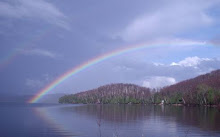Not me. I'm lazy in some ways with my work. But being lazy can be, as my husband says, "working smart."
When I arrived in Québec, I'd never mixed up glazes from scratch. I decided I would start since I'd purchased 500 lbs of glaze making materials from the potter who'd sold an electric kiln to me.
Other things were new to me as well as mixing glazes - I'd never fired glazed work in an electric kiln before. The kiln I bought fires to cone 11 or 24oo degrees F. What I didn't know was that if you repeatedly fire an electric kiln to that temperature everything inside the control panel will melt. And it did. But I digress.
My glaze learnin' has been informal. I read, I try recipes (someone else's creation), and I read some more. I'm largely concerned with the task at hand, which is working for a living by making pottery that people are ordering now and wanting soon. Formulating my own glaze or fixing a glaze so it works for me isn't something I've mastered. Not even close. I have a rather Japanese approach to my glazes. I work with what I have, and frequently in my case, what I have found, been given or what was on sale. I make pieces to suit whatever's in the bucket. The bucket of glaze is my inspiration!
One of my clay pals, Tim T., gave me some bagged glazes that his studio won't ever use. It was a similar situation to how I got the glaze that Cynthia gave me - neither she nor Tim knows anyone who fires to cone 9/10, except for me. If a glaze is formulated to fire at cone 9/10 and you regularly fire to cone 6 (the preferred firing temperature of those who fire electric kilns), well, it's probably not feasible in a teaching studio situation to experiement.
So, I have this glaze from Tim T. and I mixed it up. It was labelled Tenmoku and the Tenmoku that I'd worked with in the past was a black gloss that broke brown. In fact I researched Tenmoku glazes and found this: "Tenmoku glazes can range in color from dark plum (persimmon), to yellow, to brown, to black." So I was surprised that this Temmoku was peach coloured in the bucket.
 David Leach (England 1911-2005) Tenmoku Glazed Studio Pottery Teabowl, 350 GBP.
David Leach (England 1911-2005) Tenmoku Glazed Studio Pottery Teabowl, 350 GBP. I fired this small stoneware wine cup and got a gorgeous crackled glaze that is almost transparent. In places where there is more than one layer of glaze it's a very pale opalescent white-blue. On stoneware, the buff coloured clay shows through and the colour reminds me more of...lightly speckled fish flesh. Hmmm. Not exactly beautiful. What to do with this glaze? I'm going to try it on white clay! My guess is that it will be a very blue, celadon-like glaze. (I'm still puzzled over its being labelled tenmoku.) What will I make? Saké cups! Why not?

Stoneware wine cup. "Tenmoku" glaze. Artist's collection.







No comments:
Post a Comment